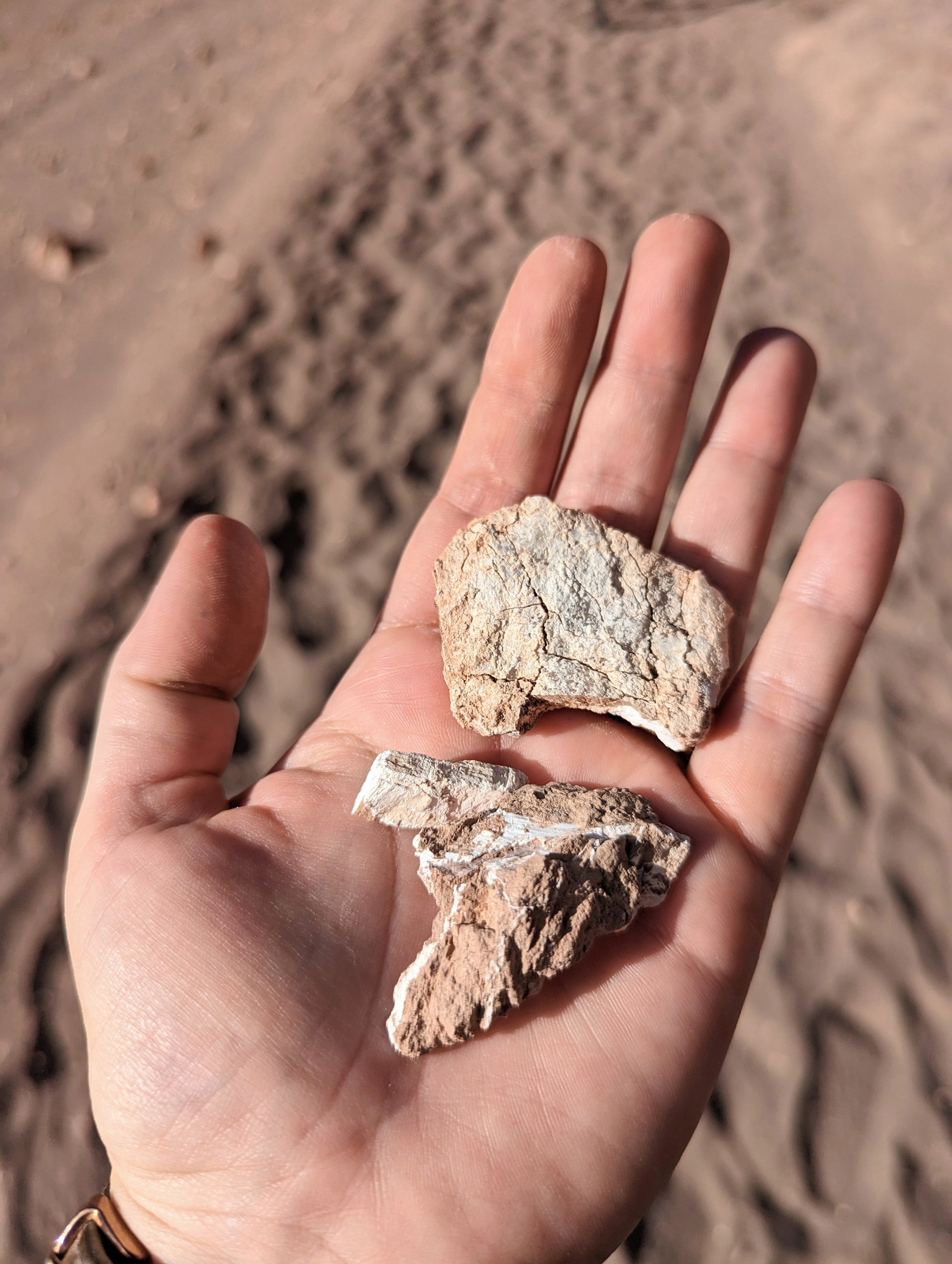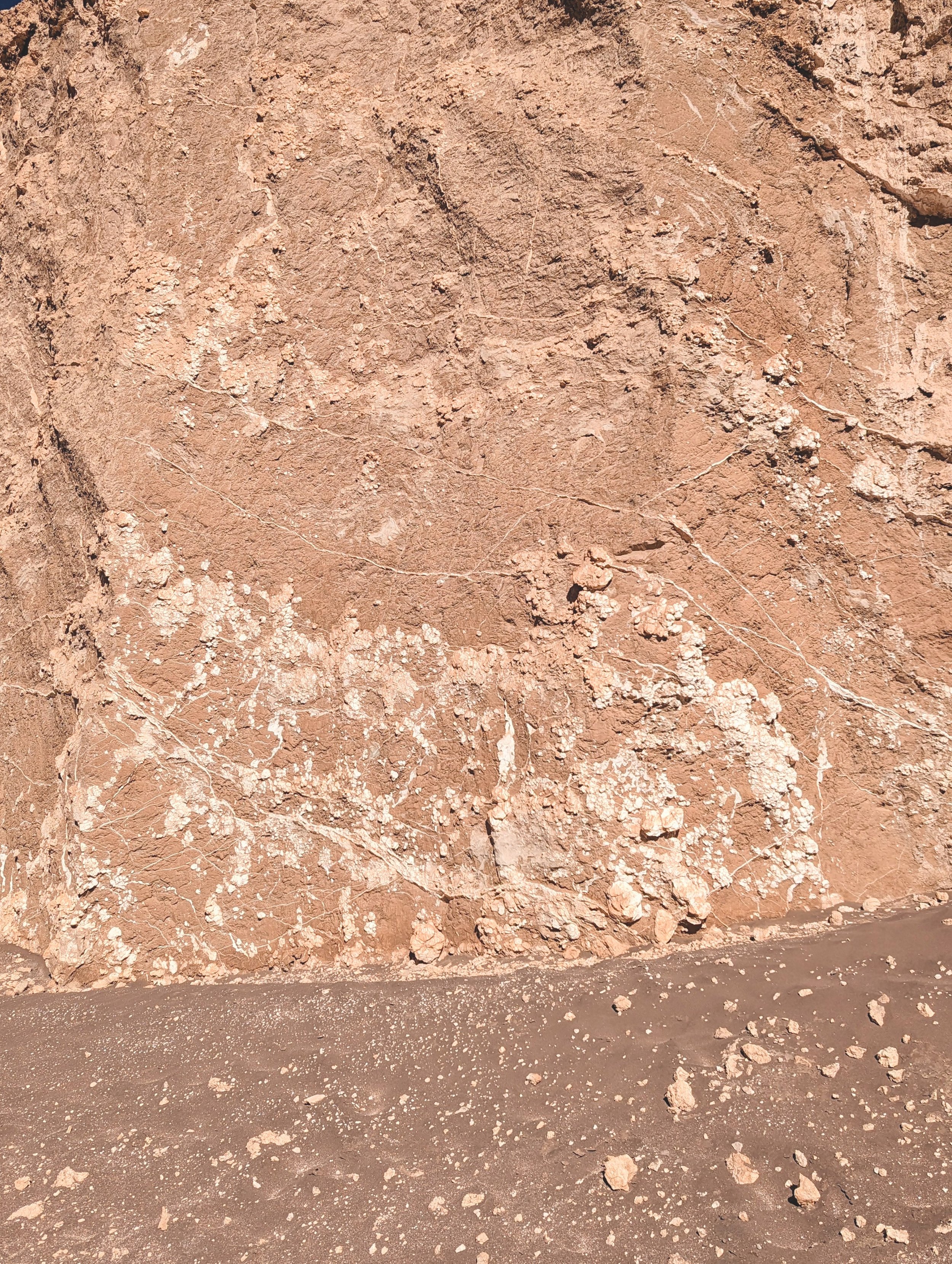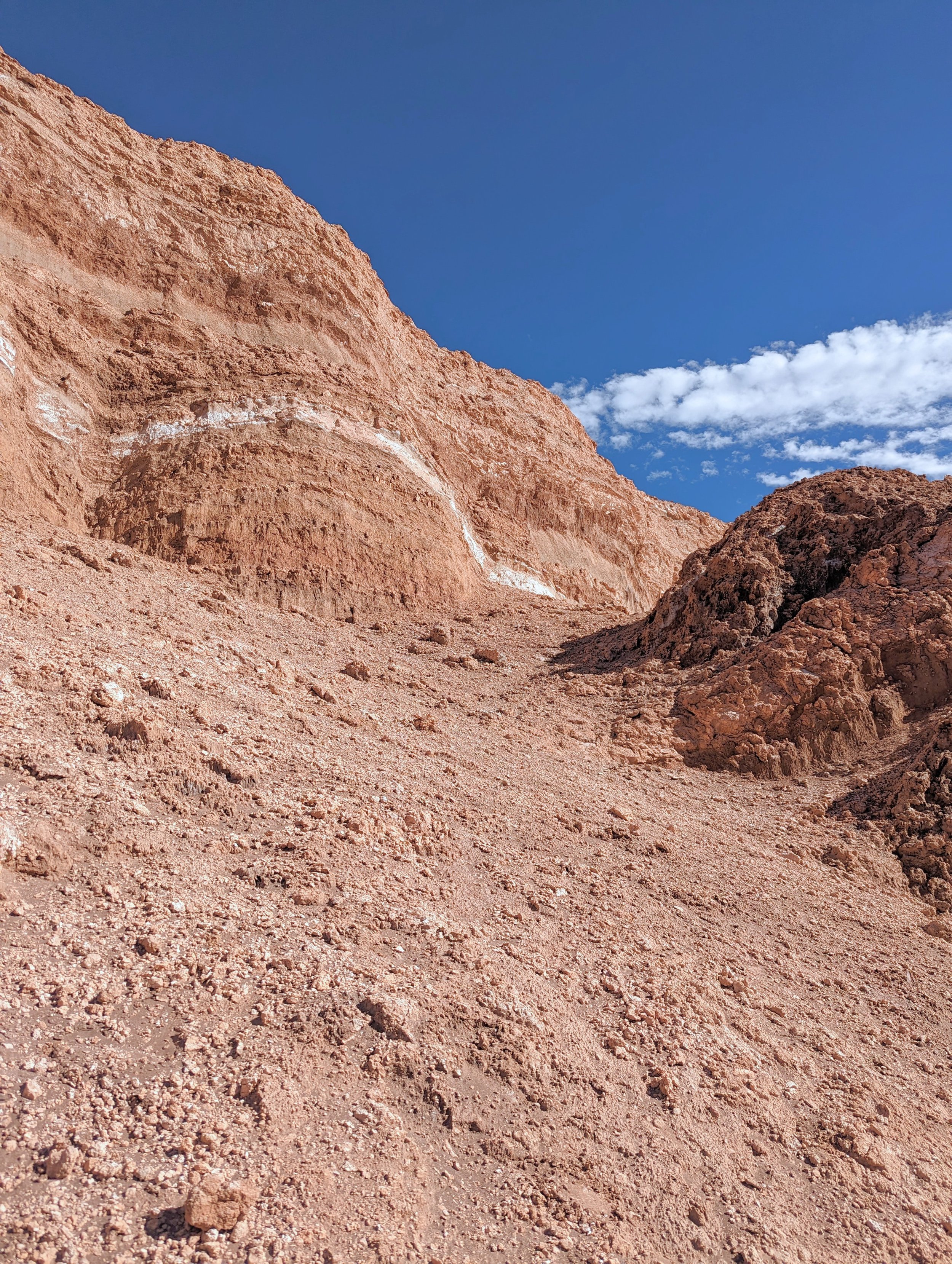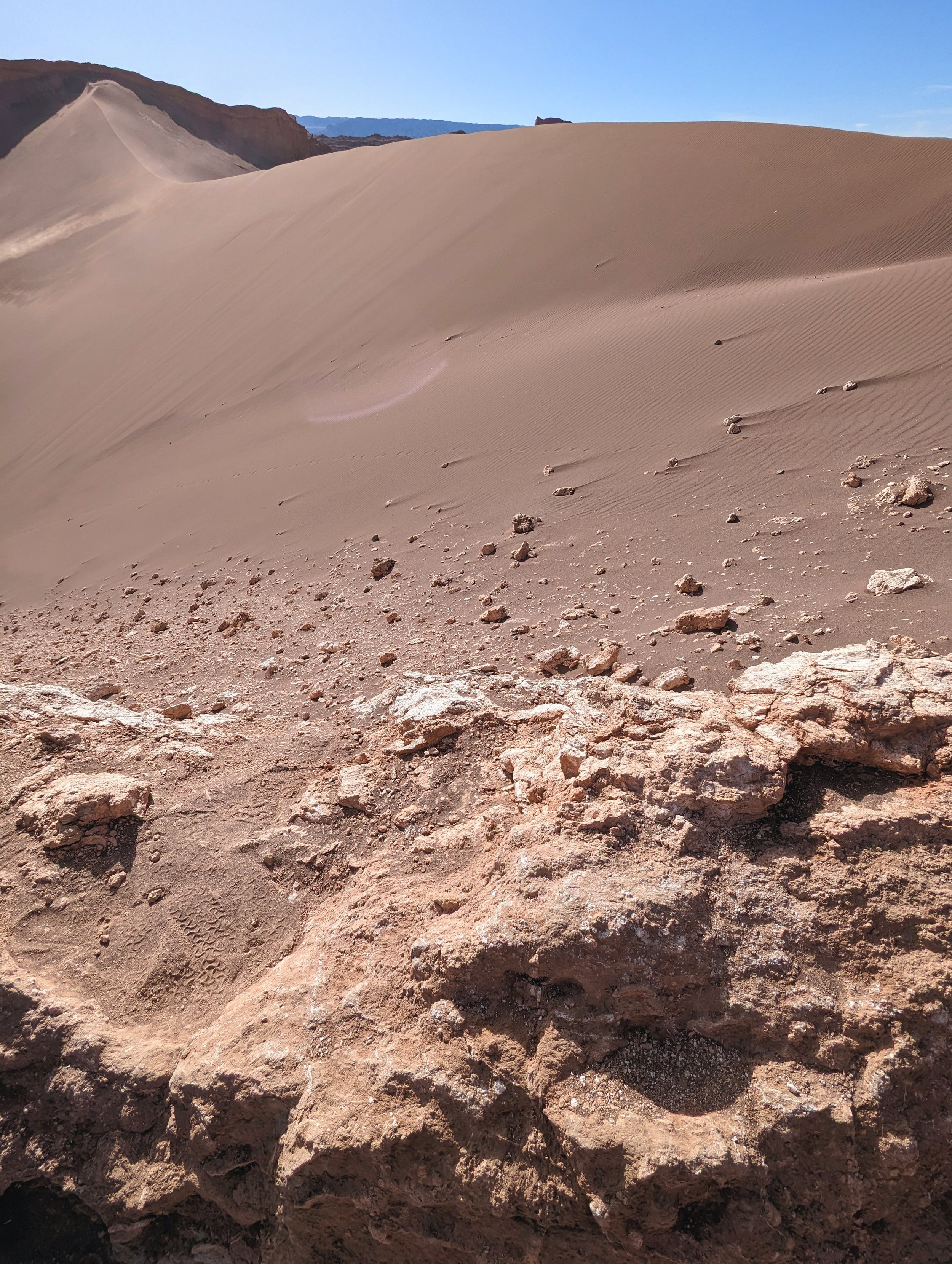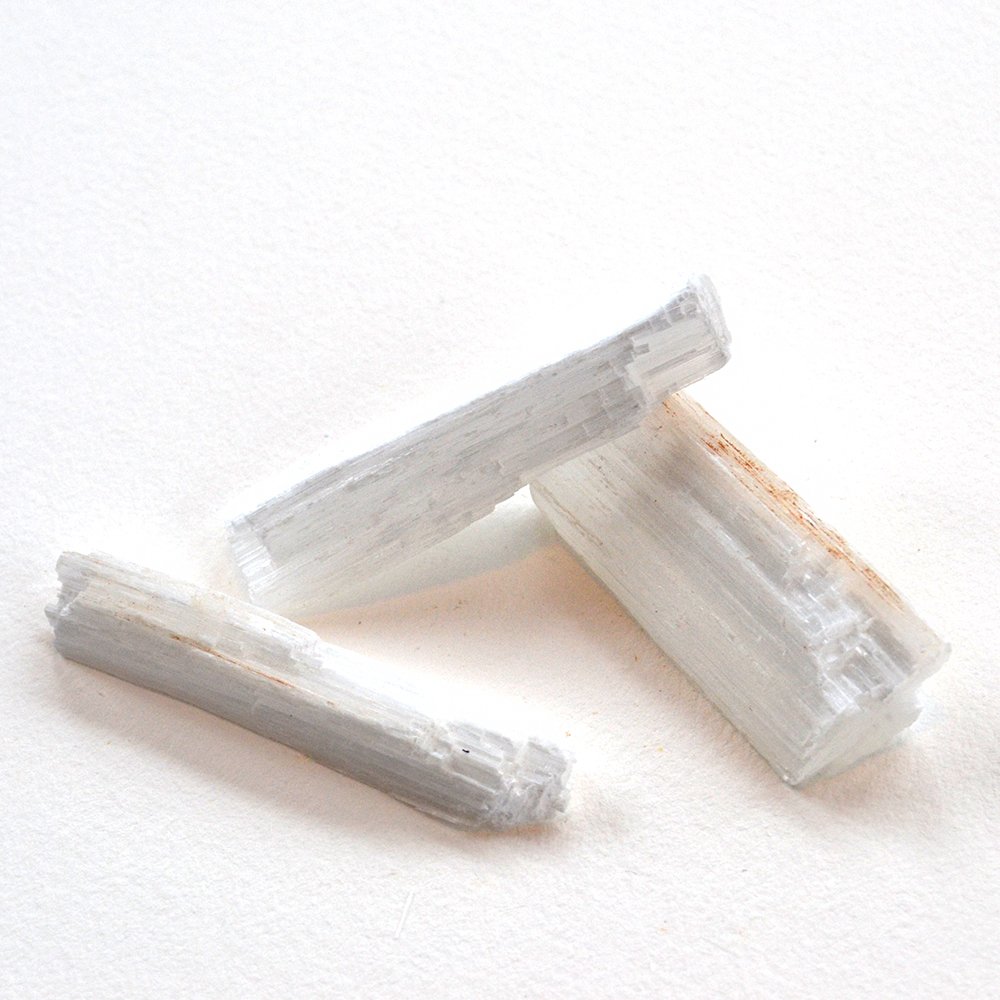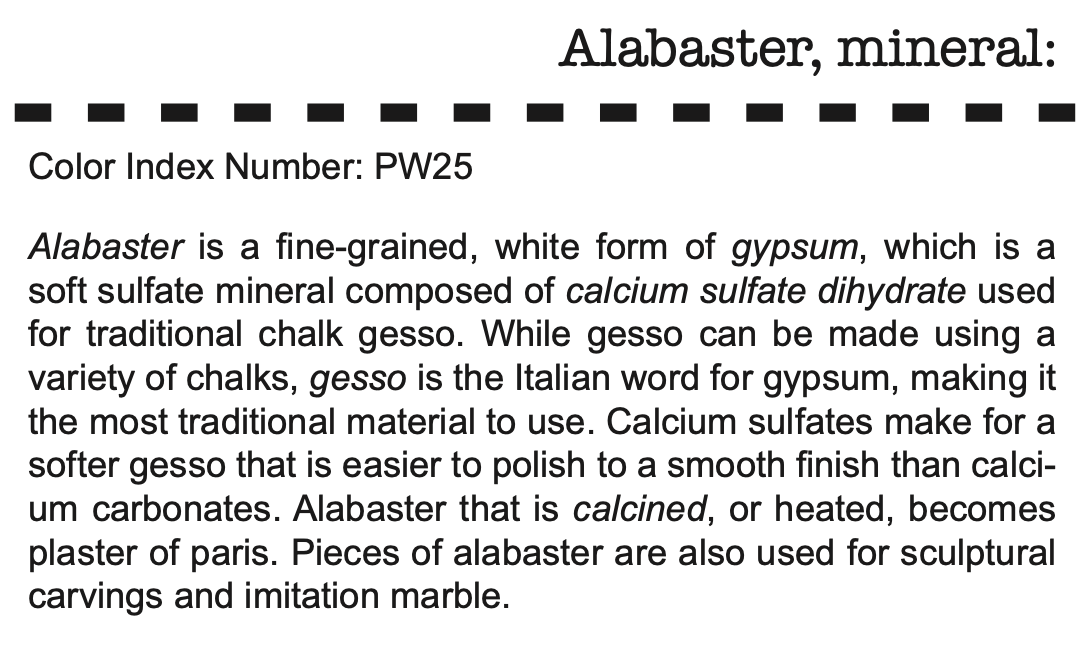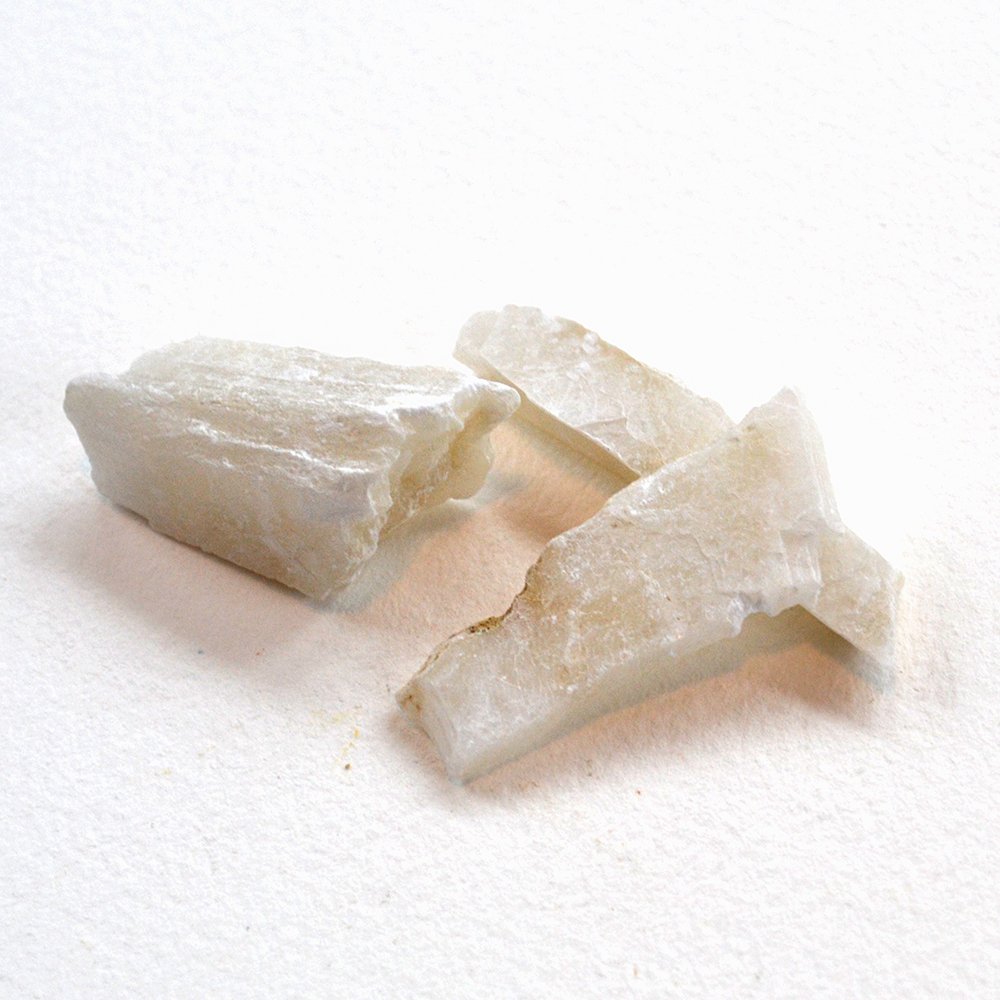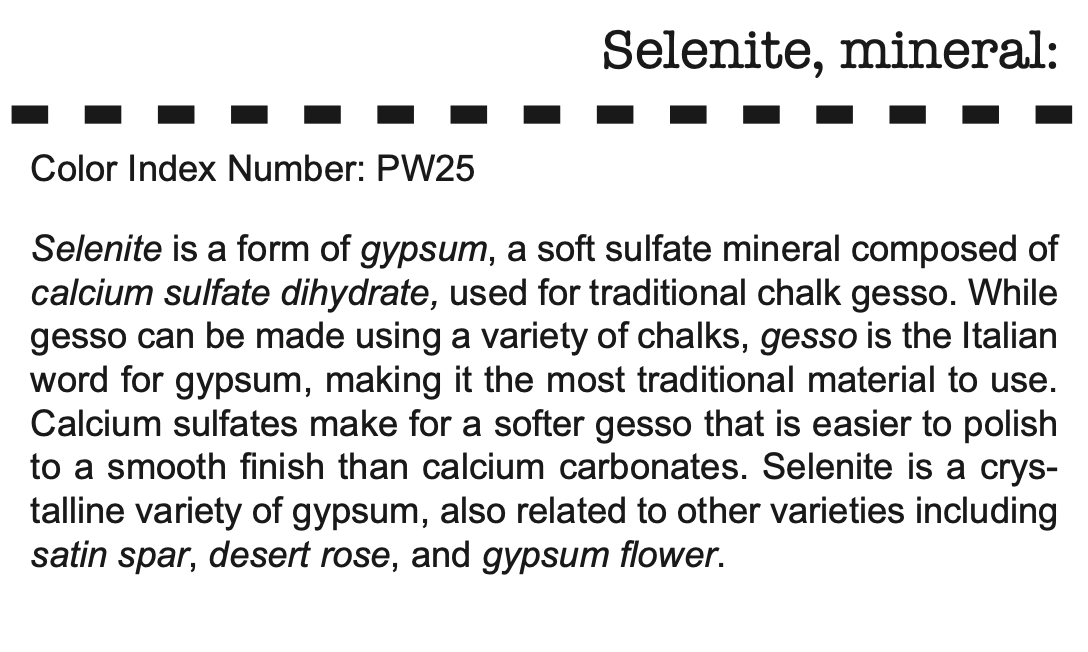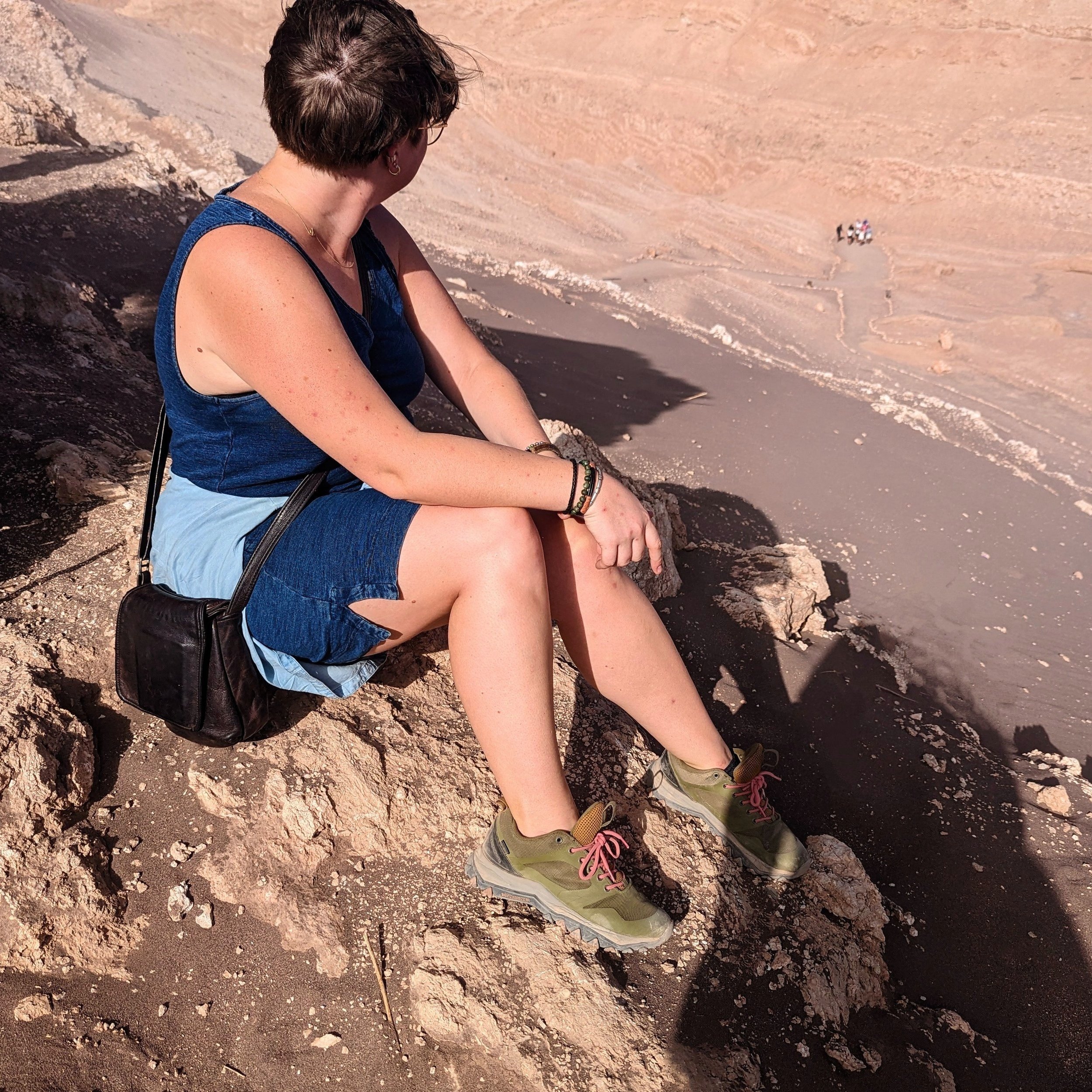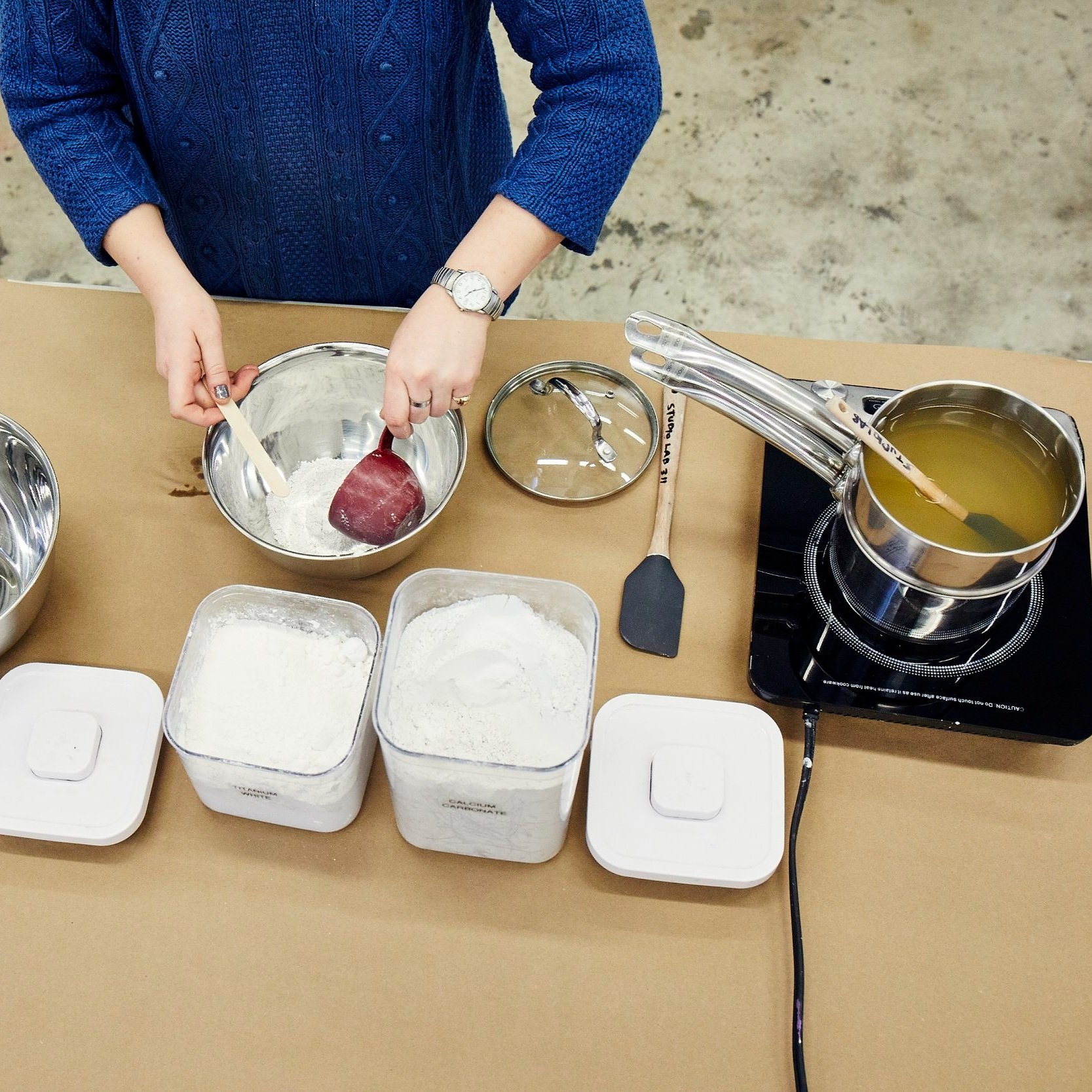Mid-April, Atacama Desert. We filed out of the bus at Valle de la Luna into the blazing afternoon sunlight, pinkish terracotta sand slouching beneath our footsteps. Dunes and rock formations protruded around us for as far as we could see, so monochromatic that the landscape looked like it had been chiseled then painted over with the same earthy blush. Interrupting the continuous colorscape were white mineral veins winding through the cliffs, clustering in the sand, glinting in the sun. Gypsum. “Se llama ‘Yeso,’ este mineral blanco,” our guide said, flaking off a piece of the soft white stone and scratching into it easily with her fingernail, “es muy suave. Mira como brilla,” she said, look how it shines. She tilted a more crystalline piece and the light danced. I smiled to myself, recounting the mineral’s characteristics in my head– the different crystalline varieties, how it can be carved into a sculpture imitating marble, heated to create plaster of paris which is used for frescoes. Most importantly (to me), gypsum is ground to a powder and mixed with rabbit skin glue to make gesso, the most traditional and luxurious of all painting grounds. I visited the material from my favorite painting ground in its natural habitat: the ground.
In English, this mineral is called Gypsum. In Greek, it’s Gýpsos (γύψος). In French, it goes by Gypse. In Arabic, Jibs (جبس). Spanish, Yeso, of course. And in Italian? In Italian, it’s called Gesso. Gesso the mineral is used to make Gesso the painting ground. Considering its namesake, it should come as no surprise that traditional gesso grounds using gypsum and collagen glue trace back to Italy. Italian artist Cennino Cennini published Il Libro Dell’ Arte, a handbook on painting materials and techniques, around the turn of the 15th century. This book details how to make gesso, and serves as one of the most comprehensive records of early European painting techniques.
So, what is this miraculous mineral, exactly? Gypsum is composed of calcium sulfate dihydrate with a monoclinic (parallelogram shaped) crystal system, a Mohs hardness of 2, and a refractive index around 1.52. In addition to its fine art uses as a material for gesso, plaster and sculpture, gypsum also has a ton of common applications. This mineral is used in construction to make wallboards such as drywall and sheetrock, and gypsum derived building blocks and mortar. It’s used in agriculture as a fertilizer (the calcium and sulfur are plant nutrients), and as a material to restore saline and acidic soils, and reduce soil toxicity. Miscellaneously, it is used in the medical industry to make plaster molds and splints, in blackboards and sidewalk chalk, and in various food formulations such as altering the hardness of water for brewing or for coagulating tofu. From the walls of the buildings we inhabit to the earth that we walk on, nary a day passes without some contact with gypsum– and that’s before factoring in studio time! This mineral comes in a handful of different crystalline forms, including satin spar, desert rose–in arid places, both gypsum and baryte can be found in the literal shape of a rose– and more ubiquitously, selenite and alabaster. Below are samples and catalogue cards of alabaster and selenite from my Material Archive of natural and historic painting materials.
Nowadays, those of us who make and use traditional gesso grounds are likely mixing natural calcite or a synthetic precipitated chalk and titanium white pigment with our rabbit skin glue. Calcite is now considered the gesso-making norm in place of gypsum. Hairsplitting aside, I should clarify that the gesso we’re talking about here is a totally different thing than the "gesso” we buy in large buckets from the art supply store. That “gesso” is an acrylic ground, erroneously and misleadlingly named by the paint making industry (remember that gesso the painting ground and gesso the mineral are etymologically linked). The correct name for the store-bought “gesso” is acrylic polymer emulsion ground, which doesn’t exactly roll off the tongue. It sounds like a small semantic slip-up, but it has really convoluted the understanding of artists over the years. Ground is the umbrella category here (not “gesso,” as is the common belief), and a painting ground can refer to any material being used as the preparatory layer of a painting. This category encompasses many different materials, including oil grounds, acrylic polymer emulsion grounds, and of course, traditional gesso grounds.
Observing the way paint could be held so adoringly by the smooth, absorbent surface of traditional gesso, created by thoroughly sanding the dry chalky surface, after having prudently applied eight plus layers of warm gesso, which I made myself by melting the granules of glue into water and sifting in powdered whiting… this fundamentally changed me. Reoriented my entire practice towards the mystery and magic of materials. It put the ‘matter’ into the process for me, both in terms of physical matter and why the physical matter matters. It taught me that the information held within the ground of the painting– its texture, absorbency, sheen– dictates every single stroke of paint that sits on top of it. In the same way, the ground beneath our feet dictates and shapes our every step on this earth. Our feet slump into the sand, skid down a dry gravel pathway, squelch into mucky mud, spring out of damp spongey moss, skate across ice. The earth holds us up well.
We spent our afternoon in Valle de la Luna surrounded by sedimentary clays, sands, silts and salts, with bands of gypsum illuminating our path. Gypsum forms all over the world, from the Atacama desert in Chile, to the cities of Araripina and Grajaú in Brazil, to Pakistan, Indonesia, Iran, Spain and all across Europe, the southwest of the United States, with one of the world’s largest deposits being in Fort Dodge, Iowa. It was a humbling and joyful experience to visit this dear mineral in one of its many homes, to observe firsthand its full gamut of patterns and shapes, its textures and sheens. To meet the ground in the ground.

